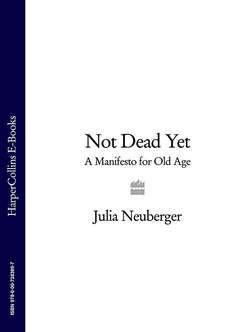Читать книгу Not Dead Yet: A Manifesto for Old Age - Julia Neuberger - Страница 6
1 Don’t make assumptions about my age: end age discrimination
ОглавлениеWe need to have a clearer idea what constitutes a successful old age, and a sense of how that might differ from person to person. The mechanistic and medical definitions of professionals clearly don’t sum up what might be very different experiences of various levels of physical ill-health and disability. Real people break out of those definitions but policy still traps them there.
That has to be set against new pictures of how we age and what we do at what stage of our lives. The age at which we have children is changing. Is 50 the new 30? Rates of teenage pregnancy in the past 20 years have never been higher in the modern era, but at the same time many women are delaying having their babies. The number of women having children in their thirties and forties has climbed steadily over the last 20 years, at a time when the overall birth rate has been dropping. In 2003, the fertility rates for women age 35–39 and over 40 both increased by almost 8 per cent.
As women may now be able to – and choose to – conceive well into their fifties and, eventually, perhaps beyond, older women may have sons and daughters who are going through the throes of adolescence or establishing themselves at work just at the time when the older person might need a bit of help, unless we are to live so much longer that dependent old age will not hit us until we are 95 or more. Indeed, from some 8,000 of us who reached 100 in 1997, there will be 30,000 or more in 2030 – and that is a relatively conservative estimate.
But it is easy to be blinded by the figures if we have no clear idea about what old age means, what we want from it, and how to get it, especially as we are likely to be treated – when the time comes – as if we have no opinions on the subject and are happy to sit in front of the television in our care homes.
